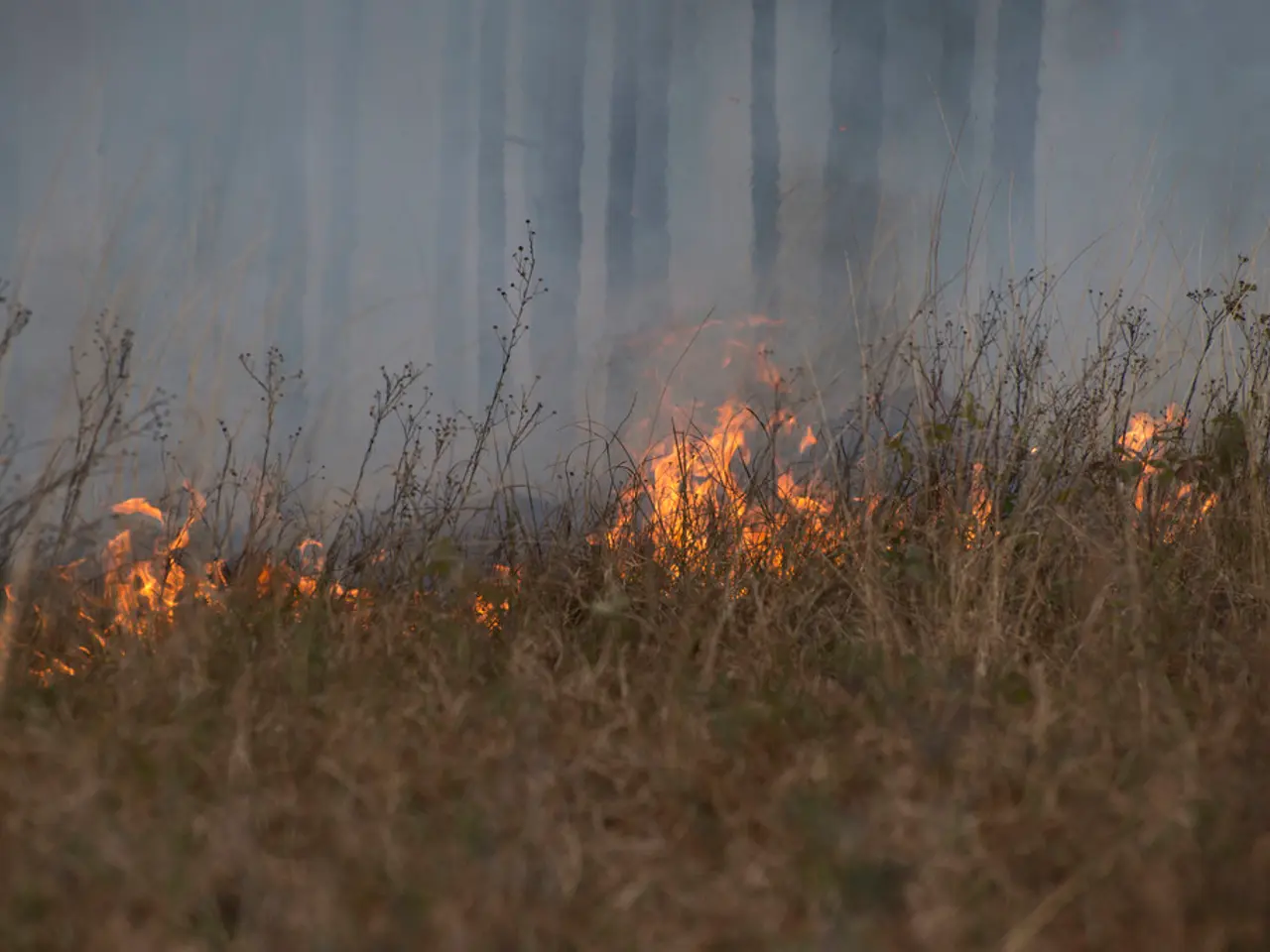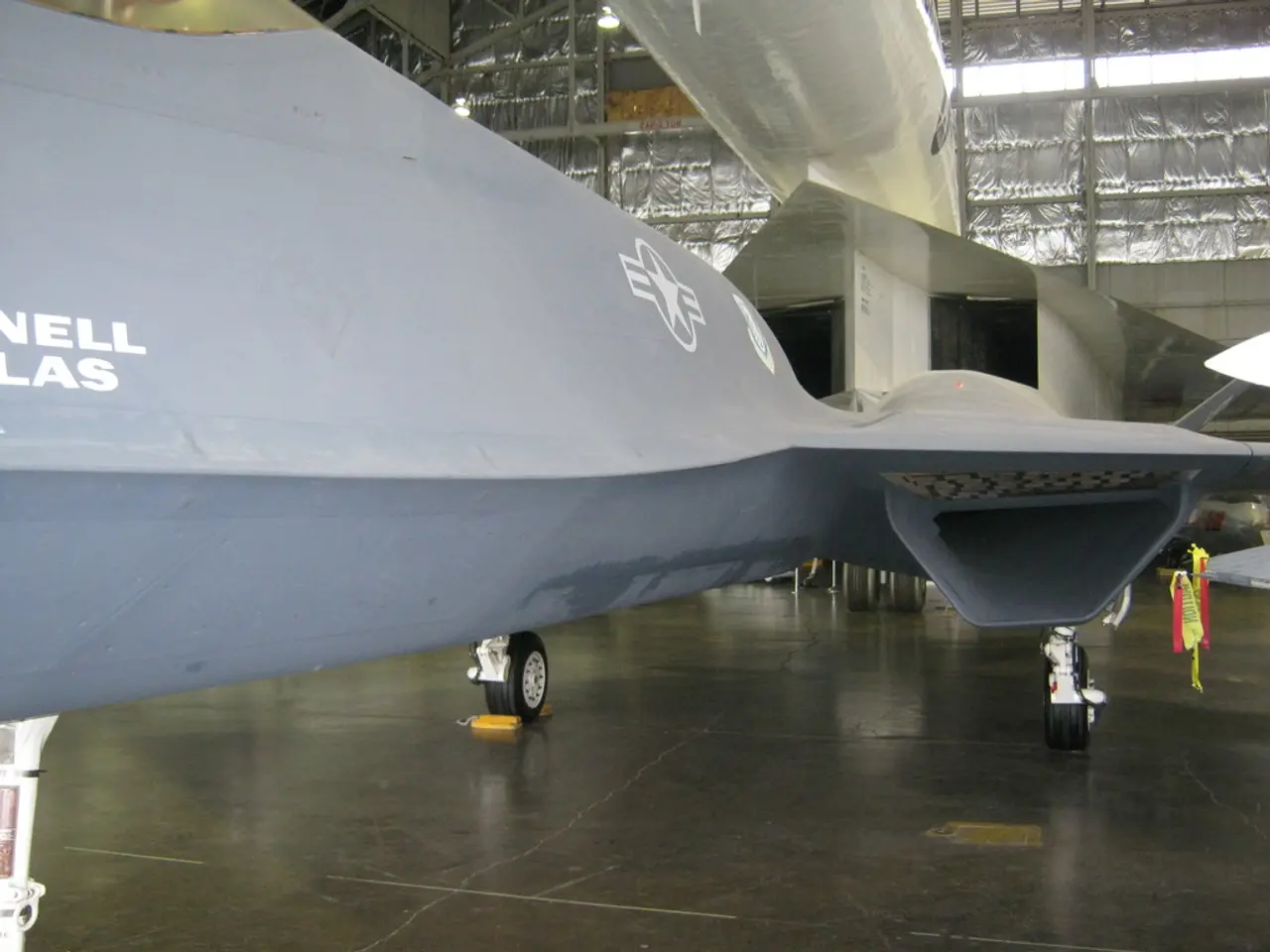Advantages Fire Departments Gain from Employing Drones
Firefighting Drones: A Game-Changer in Wildfire Management
In the ever-evolving landscape of technology, drones are making a significant impact on firefighting efforts across the globe. With a current market value of approximately USD 1.33 billion to USD 1.98 billion in 2024, the firefighting drone market is expected to grow robustly over the next decade, reaching USD 5.59 billion by 2034 at a CAGR of around 10.4% to 10.9% annually [1][3].
The benefits of incorporating drones into firefighting operations are manifold. They provide enhanced situational awareness, enabling real-time aerial surveillance for early fire detection and monitoring, thereby improving decision-making during operations [1][3]. Drones can also reduce the risk to firefighters by accessing hazardous areas without putting personnel in danger, particularly in wildfires and complex terrains [1][3][4].
Active fire suppression is another key advantage, with drones equipped to drop fire retardants, water, or fire suppression balls directly onto fires, augmenting traditional firefighting methods [3]. In addition, drones play a crucial role in search and rescue efforts, helping to locate trapped or injured individuals in smoky or debris-filled environments, thereby improving rescue efficiency [3].
Post-incident assessment is another area where drones excel, enabling thorough investigation and damage assessment after fire events, aiding recovery and prevention strategies [3]. The integration of AI and IoT further enhances their capabilities, enabling real-time data processing, predictive analytics for fire spread, and coordination with ground teams to optimize resource deployment [3].
Improved communication and connectivity are also key benefits, with drones enhancing coordination between command centers and field teams via advanced communication systems [1].
One of the most advanced drones in the firefighting arena is the DJI Matrice 300 RTK, which boasts an impressive range of 15 km (9.3 miles) and is suitable for firefighting agencies looking to implement detailed mapping technology [6]. The DJI Matrice 350 RTK takes this a step further, offering the capacity for thermal imaging or LiDAR cameras along with the DJI O3 Transmission module, which extends signal range to 20 km (12.43 miles) [7].
As drone technology evolves, its roles in firefighting are expected to become even more hands-on, such as fleets of autonomous drones coordinating in real time to monitor, manage, and fight wildfires [8]. To ensure first responder drone pilots are up to date with regulations and best serve firefighting efforts, organisations like The Pilot Institute offer Part 107 training programs, and the DRONERESPONDERS and Pilot Institute have partnered to offer the industry's most comprehensive training for public safety drone users [9].
However, along with these benefits come important considerations such as data management and privacy concerns, airspace regulations and safety concerns, and the need for clear standard operating procedures (SOPs) for drone usage, including preflight checks and procedures for data storage and security [2].
In conclusion, firefighting drones represent critical tools for improving operational safety, efficiency, and effectiveness in firefighting and disaster management [1][3][5]. As technology continues to advance, we can expect to see even more innovative applications of drones in the firefighting sector.
| Aspect | Details | |-------------------------|-------------------------------------------------------| | Market Value (2024) | USD 1.33B – USD 1.98B | | Projected Market (2025) | ~USD 1.47B | | Expected Market (2034) | USD 5.59B | | CAGR | 10.4% – 10.9% | | Key Benefits | Enhanced situational awareness, reduced firefighter risk, active suppression, search & rescue, post-incident analytics, AI/IoT integration, better communication |
References: [1] Grand View Research. (2021). Fire Fighting Drones Market Size, Share & Trends Analysis Report By Component (Hardware, Software, Services), By Application (Firefighting, Search & Rescue, Surveillance & Mapping), By Region, And Segment Forecasts, 2021 - 2028. [2] Federal Aviation Administration. (n.d.). Public Aircraft Operations. [3] National Aeronautics and Space Administration. (n.d.). Unmanned Aircraft Systems (UAS) Integration in the National Airspace System (NAS) - FAA. [4] National Fire Protection Association. (2020). Wildland-Urban Interface Firefighting. [5] National Institute of Standards and Technology. (2020). Fire Drones: Technologies and Opportunities for Public Safety. [6] DJI. (n.d.). Matrice 300 RTK. [7] DJI. (n.d.). Matrice 350 RTK. [8] National Science Foundation. (2021). Autonomous Drones for Wildfire Detection and Suppression. [9] The Pilot Institute. (n.d.). Training Programs. [10] DRONERESPONDERS. (n.d.). About Us.
In the context of firefighting operations, drones can be utilized in simulation training scenarios to prepare first responder drone pilots for real-world environments, enhancing their ability to effectively manage wildfires [2]. As technology continues to progress, simulation software integrated with drone technology may allow for more realistic and immersive training experiences for Part 107-certified pilots, ultimately contributing to the overall safety and efficiency of firefighting missions [10].




